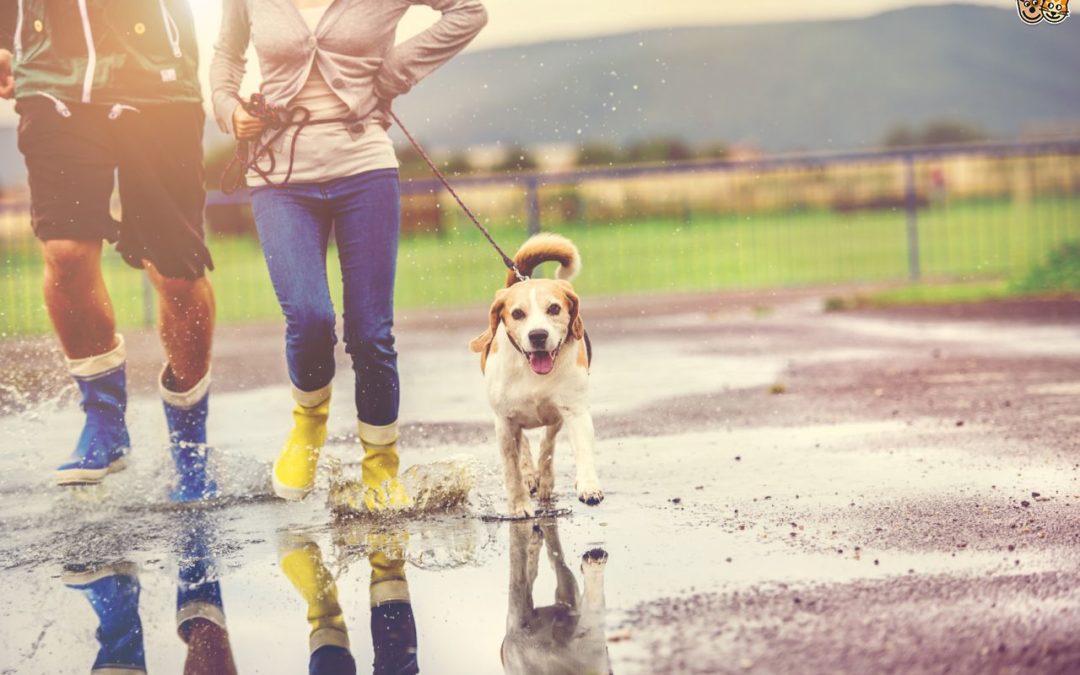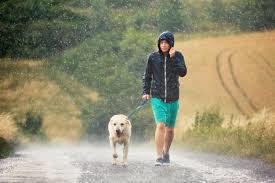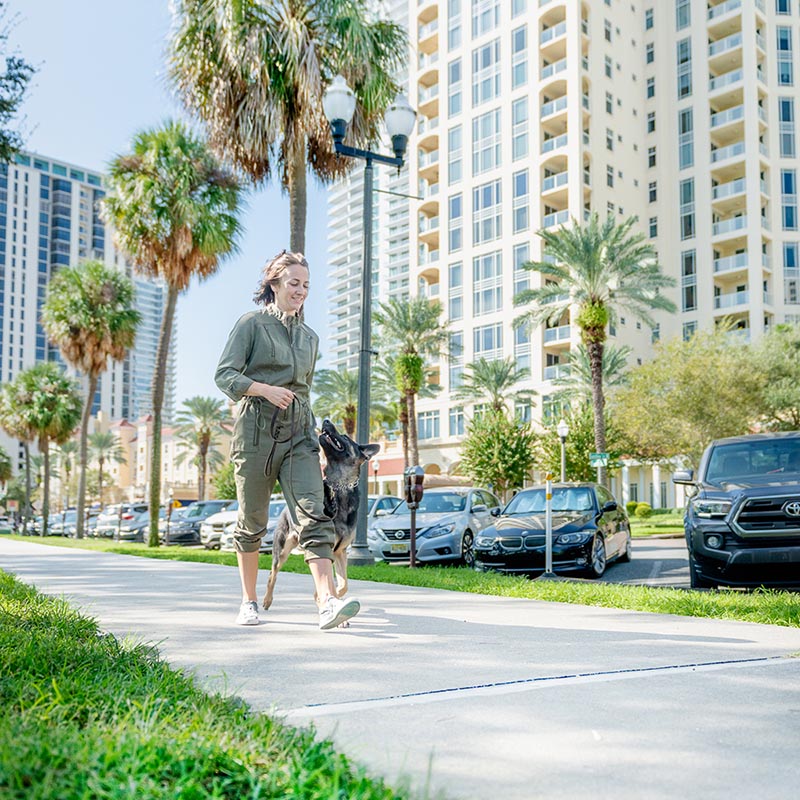Hurricane season is upon us, and so potty training for hurricanes must begin. I have wanted to write this blog since last year. The DogHouse had numerous phone calls from clients who were evacuating as Hurricane Irma approached St. Pete/Tampa area. The majority of their worries centered around one thing: How to get their dog to pee on command while leashed. That can be extremely important when trying to get out of town quickly and don’t have time for your usual, leisurely walk. Dogs can be picky about where they like to potty, making this type of forced evacuation even more stressful.
Common Issues
Let’s take a moment and break down this process. Dogs typically have two main issues in these situations. The first is that some dogs do not like to go to the bathroom while on a leash. The second is that dogs tend to get too comfortable with a particular surface. For example, if a dog prefers to go to the bathroom in the grass, it may have trouble going on other surfaces such as rocks or mulch. This second issue is even more true when dogs are pooping versus when they are going number one.
Potty Training for Hurricanes
So, now that we have identified the issue’s roots, here is how we would go about the corresponding training. Teaching a dog to pee on a leash is easier than pooping, making it an excellent first step. However, the goal is that the dog potties on cue while on a leash. Getting your dog to potty on cue is important, even in non-emergency situations. For example, this was personally helpful for me when traveling with my competition dog, Genghis. As any competitor in dog sports would agree, knowing that your dog pooped BEFORE walking into the competition ring allows you to enter the ring with more confidence! Even if you don’t take your dog to competitions, teaching your dog to potty on cue is still beneficial. Another bonus to training your dog to potty on cue is that they won’t continually use the same spot in your yard.
My adventures with Genghis have led him to potty in a variety of places. From the Tampa airport to the balcony at a hotel. Although some might say that training a male dog to command is more relaxed than a female, I would disagree. Male dogs have a tendency to “mark” more often, which means that you must pay attention and make sure they are completely emptying their bladder when they go.
Here are the best steps to help teach your dog to learn how to potty on a leash and command:
- Try to set aside time for this particular training in the mornings. Put your dog on their leash (even if it’s just in your backyard) and take your dog directly to the spot you want them to “go.” Say your chosen command for “potty,” and then continue repeating it until your dog goes. If the dog is actively sniffing around to find a place to relieve themselves, then stand still and repeat the command or pace back and forth in the immediate area while pointing to the grass.
- Once the dog does business, reward them in a small manner, for example, with a little treat or neutral praise. Be careful not to award the dog until it has finished going to the bathroom. If your dog has only peed, it is likely to need still to poop (especially in the morning). Therefore, do not give the dog a more substantial reward until it has pooped as well as peed.
- If you are still waiting for your dog to poop after peeing, repeat the cue for potty while following the cycle in step one. Once the dog poops, you can give them a greater reward, such as many treats, higher praise, or playtime. If you have a “traveling pooper” (a dog that moves while pooping), you may want to try holding them on a shorter leash to limit their movement. If this doesn’t work, be mindful that you may need to catch it as they go to avoid your dog stepping in their poop.
- Once your dog has mastered this process during their morning potty time, it is now time to apply this training at other times during the day. Use the same method described above and, over time, begin shortening the leash or varying the length. At this stage of the training, you should still take the dog to the same spot you want them to go. Remember, dogs typically only poop once or twice a day, so they might not poop every time you take them out. Over time, you should become familiar with their potty routines.
- The last step is to begin exposing your dog to many different surfaces while repeating steps 1-3. Though you should have been taking your dog to the same spot during the initial phases of this training, you should now vary both the place and the surface (grass, sand, pavement, etc.)
Traveling can be stressful, especially in emergencies! The goal of potty training for hurricanes is for your dog to quickly adjust their potty routine so that they become adaptable to changes in both your routine and your environment. Relax, and take your time as you move from step to step.
The Doghouse is always here to help guide you as we attempt new obedience training, so feel free to reach out at (727) 201-9790.
Below is a previous graduate through our Full-Service Training program. This dog was taught on a leash to pee/pop when put on the right side of us.




